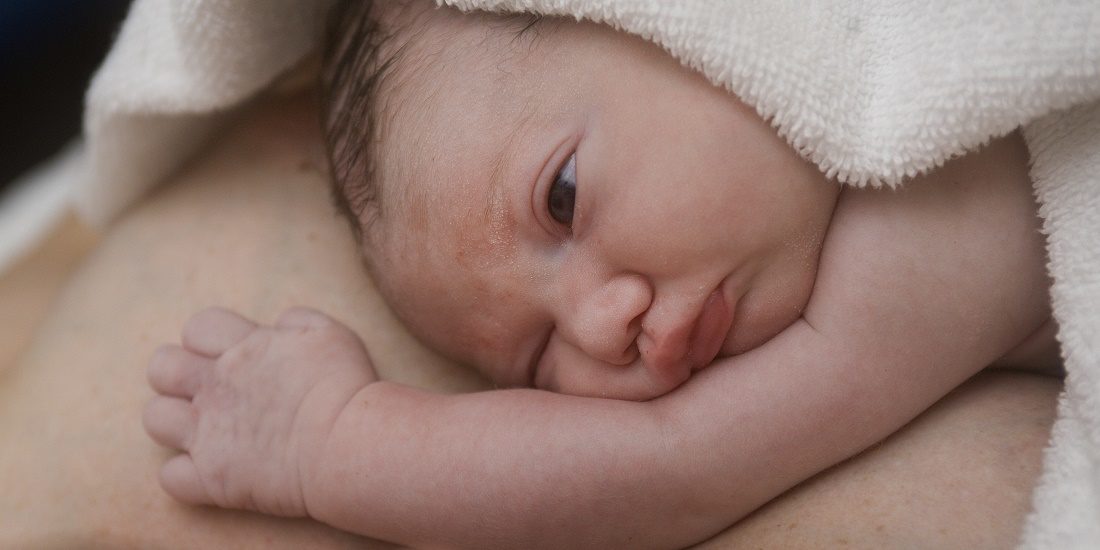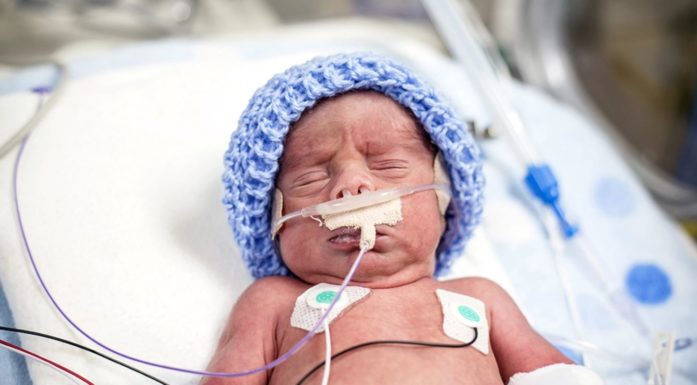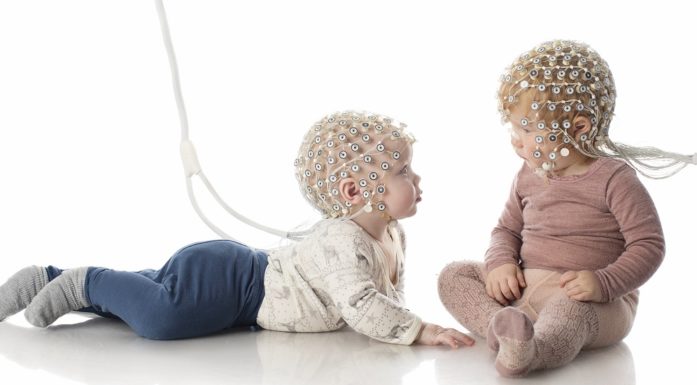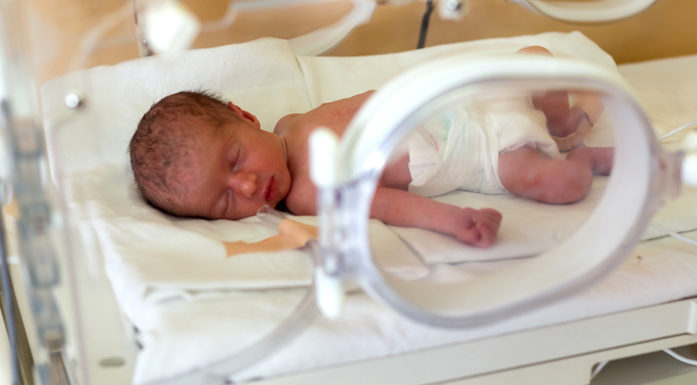How early can a mother have skin contact with her premature baby?
Early skin-to-skin care is important for newborns. But should preterm babies have this same experience, or is it more important to get them right into an incubator?
Is there a difference between premature babies who have a skin-to-skin contact with their mother and those who are placed in an incubator right after birth? That’s what Laila Kristoffersen, a PhD candidate at NTNU’s Department of Laboratory Medicine, Children’s and Women’s Health, hopes to find out.

Earlier surveys show that skin-to-skin care provides improved cardiovascular function, contributes to early breastfeeding and strengthens the relationship between mother and child. Photo: Colourbox
Many hospitals routinely place newborn infants on their mother for skin-to-skin contact immediately after delivery. The baby’s first hour is described as a sensitive period that establishes the first postpartum contact between mother and child.
Previous studies have shown that skin-to-skin care provides improved cardiovascular function, contributes to early breastfeeding and strengthens the relationship between mother and child.
Now, however, researchers want to know if this practice is safe for children born as early as week 28. A regular pregnancy lasts 40 weeks.
Safe from week 32
“We are following our family participants until two years after the child’s due date. We started the study in February 2014 and have 41 families in the study so far,” says Kristoffersen.
A previous study conducted at St. Olavs Hospital in Trondheim, which is affiliated with NTNU, showed that it was quite safe to place babies born between week 32 and week 34 on their mothers immediately after birth. Vestfold Hospital Trust and the University Hospital of North Norway participated in the earlier study. Drammen Hospital and Sørlandet Hospital Kristiansand have now joined the current study on very preterm infants.
At St. Olavs Hospital, all medically stable infants born after 32 weeks of gestation receive immediate skin-to-skin care instead of being placed in an incubator. This is done after both vaginal and caesarean deliveries. Infants receive breathing support if needed.
Since 2007, premature infants at St. Olavs Hospital have been placed skin-to-skin with their mother right after birth.
- You might also like: Look at Eva, 4 months old and standing
More skin-to-skin care now
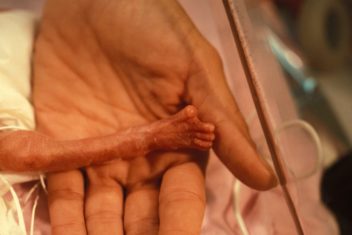
Premature babies are traditionally placed right in an incubator to give the child a warm environment and high humidity. Photo: Colourbox
Traditionally, the incubator is designed to give the child a warm environment and high humidity. The challenge with very preterm infants is that their body temperature can drop rapidly, which can lead to various other complications.
However, placing plastic and warm blankets over the child can prevent infants from cooling off. Even before this study, all newborns have been receiving much more skin-to-skin contact with their parents throughout the day now than in the past.
“The study requires considerable multidisciplinary collaboration across departments and specialties – midwives, operating room nurses, anaesthesiologists, nurse specialists in anesthesia, surgeons, and intensive care nurses on post-operative – all in addition to our doctors and nurses. We focus on safety, and before the start of the study we conducted simulation-based training in the delivery room and the operating room with everyone who’s involved in the study,” Kristoffersen says.
Studying both mother and child
The researchers are investigating whether early skin-to-skin care has consequences for the short and long term. Newborns’ stability is assessed the first day. Body temperature, oxygen saturation, heart and respiratory rate and blood sugar are measured and compared.
The study follows both the mother’s and the child’s long-term development. The child’s motor function, movement patterns, language comprehension and ability to respond to sensory impressions are tracked. The researchers also look at the child’s social and emotional development.
The study also looks at the mother’s mental health, and some mothers in each group are interviewed to learn about their experiences in the first hours after delivery.
- You might also like: Babies exposed to stimulation get brain boost
Study may change accepted practice
Every year 15 million children are born prematurely – that is, in week 37 or earlier. In addition to the medical and societal consequences, preterm birth is one of the greatest direct causes of death among newborns worldwide.
The latest study of infants born as early as week 28 of gestation may increase our understanding of how we can best care for very preterm infants and of the implications of early skin-to-skin contact. The study could affect standard practices for maternity wards. The results of the new study are expected by the end of 2018.
References:
Early skin-to-skin contact or incubator for very preterm infants: study protocol for a randomized controlled trial. Laila Kristoffersen, Ragnhild Støen, Hilde Rygh, Margunn Sognnæs, Turid Follestad, Hilde S. Mohn, Ingrid Nissen og Håkon Bergseng.
Skin-to-Skin Care After Birth for Moderately Preterm Infants. Laila Kristoffersen, Ragnhild Stoen, Linda Frances Hansen, Janne Wilhelmsen, Hakon Bergseng. Journal of Obstetric, Gynecologic & Neonatal Nursing.
